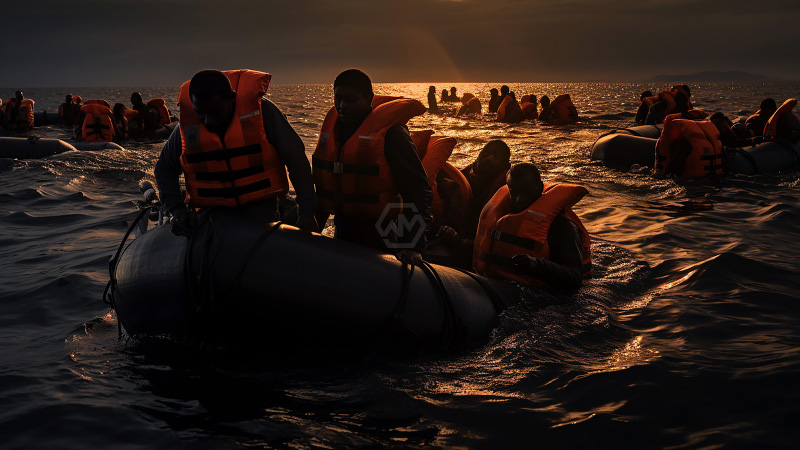- More than 600 migrants rescued south of Crete and Gavdos in two major sea operations.
- Migrants reportedly paid €4,000 each to smugglers operating from Libya.
- Shift seen from Turkish to North African routes due to tighter patrols in the Aegean.
Greek authorities, aided by FRONTEX and other vessels, rescued 630 migrants from two overcrowded fishing boats adrift in the Mediterranean Sea.
In a separate operation, two additional migrant boats were discovered, one with 73 men and another with 26 people, including minors. Two Sudanese teenagers were arrested for allegedly piloting one of the boats.
Longer, Riskier Journeys: Libya to Greece Becomes New Migrant Route
The Greek coast guard, in cooperation with EU forces, continues to face mounting challenges as smugglers shift tactics. Increased patrols in the Aegean have pushed traffickers to attempt longer voyages from North Africa, using large fishing vessels to transport hundreds at once.
The migrants rescued this week were found in dangerous conditions far from the Greek mainland. The fact that they had each paid thousands of euros reflects the desperation of those fleeing instability, as well as the profitability for traffickers who often exploit minors to operate boats.
Smugglers are now increasingly launching from Libya’s eastern coast, particularly Tobruk, using it as a gateway into the EU. This change in strategy raises significant concerns about surveillance gaps in the wider Mediterranean and the humanitarian risks of these long crossings.
Greece recorded a sharp rise in migrant arrivals in 2024, surpassing 60,000 already, mostly by sea. With the EU still grappling with shared migration policies, frontline states like Greece bear a disproportionate burden, managing both rescue logistics and asylum processing.
As smugglers adapt and sea routes grow deadlier, Greece’s latest rescues highlight the urgent need for broader international cooperation and long-term migration solutions.
“We must not look away from the human cost of these journeys. Every boat tells a story of desperation, exploitation, and hope.” — UNHCR spokesperson



